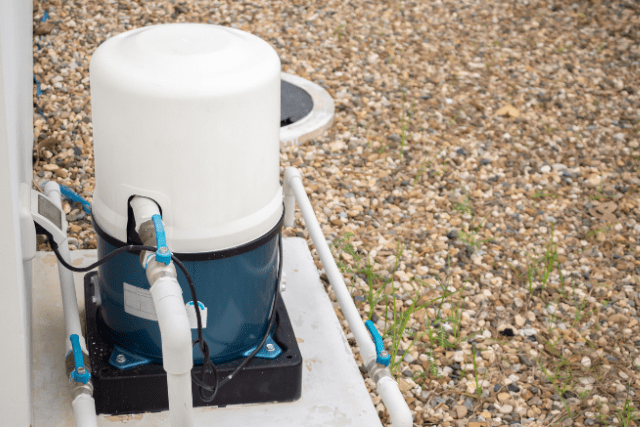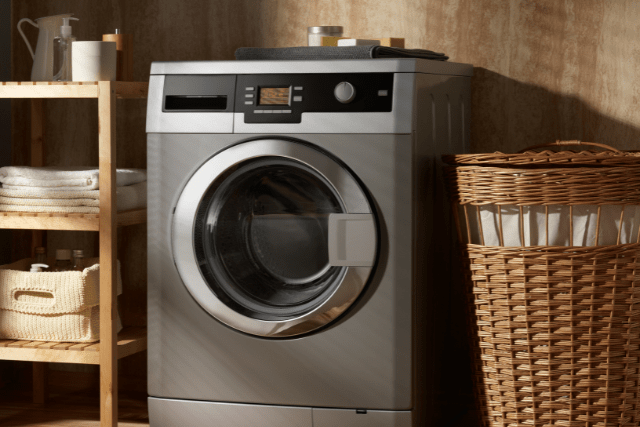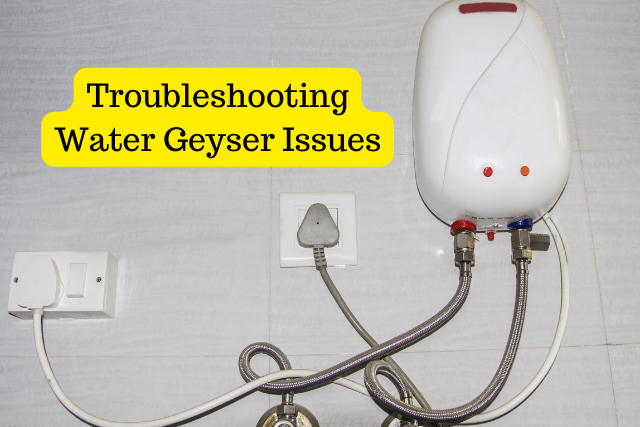Automatic water pressure pumps are essential for any household that relies on well water. These pumps are designed to provide consistent water pressure throughout the house, ensuring that all fixtures receive adequate water.
This type of pump is commonly used in homes with low water pressure or where a constant and reliable water supply is required.
However, with so many available options, choosing the best one for your home can be challenging.
Several factors must be considered when selecting an automatic water pressure pump for your home. We spent countless hours researching and testing various automatic water pressure pumps to identify the ones best suited for home use.
In this article, we will discuss the top automatic water pressure pumps that we recommend for homeowners.
We will also provide a comprehensive buying guide to help you decide when purchasing an automatic water pressure pump for your home.
Best Automatic Water Pressure Pumps
An automatic water pressure pump can make all the difference in ensuring consistent water pressure in your home. These pumps work by continuously monitoring and adjusting the water pressure to maintain a steady flow, even during periods of high demand.
Kirloskar Star Chhotu 0.5 HP Automatic Pressure Pump Water Pump

If you’re looking for a reliable and durable automatic water pressure pump for your home, the Kirloskar Star Chhotu 0.5 HP Automatic Pressure Pump Water Pump is a great option.
Pros
- Provides good water pressure
- Elegant and ergonomic design
- Suitable for use in one bathroom
Cons
- Some customers have reported issues with the automatic controller
- Can be noisy
- Some customers have reported issues with the product’s durability
We recently had the opportunity to try out the Kirloskar Star Chhotu 0.5 HP Automatic Pressure Pump Water Pump and were impressed with its performance.
The pump provides good water pressure, making it suitable for use in one bathroom. The elegant and ergonomic design is also a nice touch, adding to the overall aesthetic of our home.
Overall, we would recommend the Kirloskar Star Chhotu 0.5 HP Automatic Pressure Pump Water Pump to anyone needing a reliable and durable automatic water pressure pump for their home.
Crompton CHAMP PLUS II Residential Water Pump Self Priming Regenerative 0.5 HP Single Phase New Variant

We recommend the Crompton CHAMP PLUS II Residential Water Pump Self Priming Regenerative 0.5 HP Single Phase New Variant for those looking for a reliable and efficient automatic water pressure pump for their home.
Pros
- Drip Proof Adaptor for hassle-free maintenance
- High suction capacity for better water flow
- Suitable for wide voltage application for convenience
Cons
- It may not be suitable for larger homes with higher water demands.
- Some users reported issues with water leakage from the mechanical seal
- It may require professional installation for optimal performance.
This water pressure pump is a great investment for any household due to its impressive features. The drip-proof adaptor makes maintenance a breeze, while the high suction capacity ensures better water flow. It is also suitable for wide voltage applications, making it convenient for use in different locations.
One downside to this product is that it may not be suitable for larger homes with higher water demands. Some users also reported issues with water leakage from the mechanical seal. Additionally, professional installation may be required for optimal performance.
This Crompton CHAMP PLUS II Residential Water Pump is a reliable and efficient choice for those needing an automatic water pressure pump for their home.
STARQ ST165-9 Inline Automatic Water Pressure Pump

We highly recommend the STARQ ST165-9 Inline Automatic Water Pressure Pump for its efficient and silent operation.
Pros
- Made of high-quality materials, such as cast iron pump heads and aluminium pump housing, it is heat and wear-resistant.
- Low noise level (around 25dB) and less energy consumption.
- Easy to install with a wrench or spanner and comes with a common NPT1/2” adapter.
Cons
- The flow restriction in the kitchen may take about a minute to get hot water.
- The device may not function in automatic mode.
- The pressure increase may not be up to expectations.
This water pressure pump is perfect for many application scenarios, such as city buildings, suburban villas, houses, industrial equipment, air conditioning, boilers, solar circulating water, and more. It has a flow rate of 50 LPM and a maximum head of 9 m.
The STARQ ST165-9 Inline Automatic Water Pressure Pump is a great investment for those who want instant hot water without wasting cold water and waiting time. It can prevent pipes from freezing, which is especially useful for extremely cold areas in winter.
The installation process is easy, and you can save on hiring plumbers. The pump constantly circulates hot water, ensuring you get hot water within 15 seconds.
The STARQ ST165-9 Inline Automatic Water Pressure Pump is a great investment if you want an efficient and silent water pressure pump for your home.
V Guard Booster Automatic Pressure Control Pump

If you’re looking for an automatic water pressure pump for your home, the V Guard Booster Automatic Pressure Control Pump is a great option.
Pros
- The pump has a maximum lifting height of 215 feet, making it suitable for homes with multiple floors.
- With a maximum flow rate of 40 litres per minute, the pump can deliver a steady water flow to your home.
- The pump is made of durable iron material, ensuring it lasts long.
Cons
- The pump is heavier, weighing 16 kg, making it difficult to move around.
- Some customers have reported issues with leaks and other problems with the pump.
- The pump is relatively expensive compared to other options on the market.
The pump has a powerful motor delivers a steady water flow to our home, even when multiple faucets are used simultaneously. We also appreciate the pump’s automatic pressure control feature, ensuring the water pressure remains consistent throughout the day.
Overall, we would recommend the V Guard Booster Automatic Pressure Control Pump to anyone looking for a reliable and powerful water pressure pump for their home. Just be prepared for its weight and monitor it for any potential issues.
Components of Automatic Water Pressure Pumps
An automatic water pressure pump comprises several components to ensure a reliable and efficient water supply.
The electric motor provides the power to drive the impeller, which creates a vacuum and draws water from the main supply.
The pressure switch monitors the water pressure and activates the pump when necessary, while the pressure tank helps maintain a constant water pressure.
The check valve prevents water from flowing back into the main supply and helps prevent water hammer.
1. Electric Motor:
- The electric motor is the primary component of the pump that provides the power to drive the impeller and increase the water pressure.
- It is typically a high-efficiency motor that consumes less power while providing optimal performance.
- The motor is usually sealed to prevent water from entering and causing damage.
2. Impeller:
- The impeller is a rotating component that creates a vacuum and draws water from the main supply.
- It is typically made of durable materials such as stainless steel or bronze to ensure long-term reliability.
- The impeller’s design and size can vary depending on the pump’s capacity and the required water pressure.
3. Pressure Switch:
- The pressure switch is a critical component that monitors the water pressure and activates the pump when the pressure drops below a certain level.
- It is typically set to activate the pump when the pressure drops to a specific level and deactivate it when it reaches the desired level.
- The pressure switch is connected to the pump’s electrical circuit and controls the motor’s operation.
4. Pressure Tank:
- The pressure tank is a container that helps maintain a constant water pressure by storing a certain amount of water under pressure.
- It is typically made of steel or fibreglass and is designed to withstand high pressure.
- The pressure tank is connected to the pump and the plumbing system and helps reduce the number of times the pump needs to turn on and off.
5. Check Valve:
- The check valve is a one-way valve that prevents water from flowing back into the main supply when the pump is activated.
- It is typically installed on the pump’s discharge line and ensures water flows in only one direction.
- The check valve helps prevent water hammer, a sudden surge of water pressure that can damage the plumbing system.
Benefits of Automatic Water Pressure Pumps
Here are some ultimate benefits of an automatic water pressure pump for your home:
1. Improved Water Pressure:
- The pump ensures consistent and adequate water pressure, even in homes with low water pressure issues.
- It can boost the incoming water pressure, providing a more satisfying and efficient water flow for various household tasks.
- Improved water pressure is especially beneficial for multi-story homes or properties with long plumbing lines, where water pressure may naturally decrease.
2. Increased Water Flow:
- An automatic water pressure pump allows for a higher volume of water to be delivered, making tasks like showering, washing dishes, and doing laundry more efficient.
- Increased water flow allows you to complete these tasks quickly, improving productivity and convenience.
- It also ensures that multiple water fixtures can be used simultaneously without a significant drop in water pressure.
3. Reliable Water Supply:
- The pump helps maintain a constant water pressure, ensuring a reliable water supply for everyday use.
- It can compensate for fluctuations in the main water supply, such as during peak usage or when multiple properties are drawing water from the same source.
- A reliable water supply is essential for various activities, including cooking, cleaning, and watering plants or gardens.
4. Energy Efficiency:
- Most modern automatic water pressure pumps are designed to be energy-efficient, consuming less power while providing optimal performance.
- These pumps often feature advanced motor technology, such as variable speed drives, which adjust the pump’s operation to match the required water flow and pressure.
- Energy efficiency reduces your environmental impact and helps lower your utility bills, making the pump a cost-effective solution in the long run.
5. Easy to Maintain:
- Regular maintenance is essential for ensuring the longevity and efficient operation of an automatic water pressure pump.
- However, the maintenance tasks are relatively simple and can be easily performed by homeowners or professional technicians.
- Some common maintenance tasks include checking the pressure tank’s air pressure, cleaning the impeller, and inspecting the pump’s overall condition.
- By investing a small amount of time and effort into maintenance, you can prolong the pump’s lifespan and avoid costly repairs or replacements in the future.
These advantages make it a valuable investment for properties with low water pressure issues or requiring constant and efficient water.

Top Things to Consider While Buying
Several factors must be considered when buying an automatic water pressure pump for your home. Here is a detailed list of things to keep in mind:
1. Water Demand and Pressure Requirements:
- Determine your home’s water demand by considering the number of occupants, bathrooms, and water fixtures.
- Calculate the required water pressure based on your needs, such as showers, appliances, or irrigation systems.
- Choose a pump that can meet your specific water demand and pressure requirements.
2. Pump Type and Capacity:
- Select the appropriate pump type based on your water source, such as a well’s surface pump or a water tank’s submersible pump.
- Consider the pump’s capacity, measured in gallons per minute (GPM) or litres per minute (LPM), to ensure it can deliver enough water for your needs.
3. Power Source and Energy Efficiency:
- Determine the available power source for the pump, such as electricity or a generator.
- Look for energy-efficient models that can help reduce your utility bills and environmental impact.
- Consider pumps with variable speed drives, which adjust the motor’s operation to match the required water flow and pressure, further enhancing energy efficiency.
4. Noise Level and Vibration:
- Some pumps can be noisy or cause vibrations, which can be disruptive, especially if installed near living areas.
- To minimise noise and vibration, look for pumps with noise-reducing features, such as insulated housing or rubber mounting feet.
5. Durability and Construction:
- Choose a pump with a durable construction, such as stainless steel or cast iron, to ensure long-term reliability.
- Check for features like built-in thermal overload protection, which prevents the motor from overheating and extends the pump’s lifespan.
6. Installation and Maintenance:
- Consider the ease of installation and maintenance of the pump.
- Look for pumps with clear installation instructions and minimal maintenance, such as easy access to the impeller or pressure switch.
7. Brand Reputation and Warranty:
- Research the brand’s reputation and customer reviews to ensure you purchase a reliable, high-quality product.
- Check the warranty terms and coverage to have peace of mind in case of any issues with the pump.
8. Budget and Cost Considerations:
- When deciding, set a budget for your water pressure pump and consider the long-term cost savings, such as energy efficiency and durability.
- Compare prices and features from different brands to find the best value for your money.
Considering these factors, you can choose the right automatic water pressure pump for your home, ensuring a reliable water supply with improved water pressure and increased water flow.
Installation Process
Installing an automatic water pressure pump requires careful planning and attention to detail to ensure optimal performance and reliability.

1. Choose the Right Pump Size and Capacity:
- Determine your home’s water demand by considering the number of occupants, bathrooms, and water fixtures.
- Calculate the required water pressure based on your needs, such as showers, appliances, or irrigation systems.
- Choose a pump that can meet your specific water demand and pressure requirements.
2. Install the Pump Near the Main Water Supply Line:
- Choose a location near the main water supply line, preferably in a dry and well-ventilated area.
- Ensure that the location is easily accessible for maintenance and repair.
3. Connect the Pump to the Main Water Supply Line:
- Use appropriate fittings and pipes to connect the pump to the main water supply line.
- Ensure that the connections are tight and leak-free.
4. Install a Check Valve:
- Install a check valve on the pump’s discharge line to prevent water from flowing back into the main supply when the pump is activated.
- Ensure that the check valve is installed in the correct orientation to allow water to flow in only one direction.
5. Connect the Pump to the Pressure Tank:
- Connect the pump to the pressure tank using appropriate fittings and pipes.
- Ensure that the connections are tight and leak-free.
- Ensure proper alignment between the pump and the pressure tank.
6. Connect the Pressure Switch:
- Connect the pressure switch to the pump and set the desired pressure level.
- Ensure that the pressure switch is installed in the correct orientation and that the wiring is connected properly.
7. Test the System:
- Turn on a water fixture and check if the pump activates and maintains the desired pressure.
- Adjust the pressure switch if necessary to ensure optimal performance.
- Check for leaks and ensure that all connections are tight and secure.
Wrapping Up
An automatic water pressure pump is valuable to any home, providing a consistent and reliable water supply with improved water pressure and increased water flow.
Its installation process is relatively straightforward, and its benefits make it a worthwhile investment for homeowners experiencing low water pressure or those requiring a constant and reliable water supply.







